By Roger Rittmaster
September 15, 2023
How do you tell a moth from a butterfly or a bee from a wasp? Lots of times it’s easy, if you know what to look for. It helps to have a photograph or to capture a bug in a clear container with or without the help of a net. Alternatively, a pair of close-focusing binoculars can show details that are missed with naked eyes. As will become apparent in this essay, key differentiating features of insects often reside in their antennae and wings. There are many mimics in the insect world that are trying to pretend that they are something they are not.

Midcoast Maine’s weirdest mimic. With the head of a damselfly, the front legs of a praying mantis, and the body and wings of a wasp, the Brown Wasp Mantidfly (Climaciella brunnea) is a champion mimic. It is in the insect order Neuroptera, which includes other strange insects. The adult Mantidfly can be seen perched on leaves during June and July. They don’t move much: why bother, if you look like you’re a wasp ready to sting (they can’t).
Before we go further, here are some relevant definitions. The word “bug” has two meanings. The first is a colloquial expression meaning anything insect-like, including spiders and centipedes. Arthropods are animals with exoskeletons, literally meaning skeletons on the outside. The term Arthropod is roughly equivalent to bug, except that Arthropods include crustaceans like crabs and shrimp. On the other hand, “true bugs” refers to a specific insect order, which I’ll describe later in this essay. Insects are Arthropods with three pairs of legs (six in total). The trouble here is that many insects appear to have only two pairs of legs, such as the Mantidfly shown above. In this case, the front pair have been modified into the claws used to capture prey.
Butterflies versus Moths
How do you tell a butterfly from a moth? It’s easy if you see a brightly-colored winged insect flying in a syncopated pattern on a sunny day versus a brownish insect beneath your porch light at night. Butterflies often land with their wings together, whereas moths often land with their wings spread flat. Of course, there are lots of exceptions.
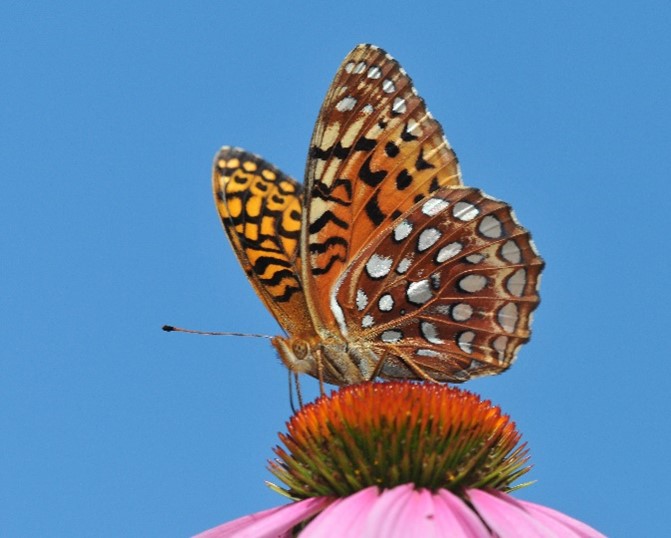

But how about the individual in this photo? The key distinction between butterflies and moths is in the antennae. Moths have either straight or feathered antennae. Butterflies have either small clubs on the ends of their antennae (as in the photo above left) or curved ends to the antennae (as in the photo to the right). Butterflies with curved ends to their antennae belong to the skipper family (Hesperidae), which are the most common butterflies in our area, but are often overlooked, because they look like moths.
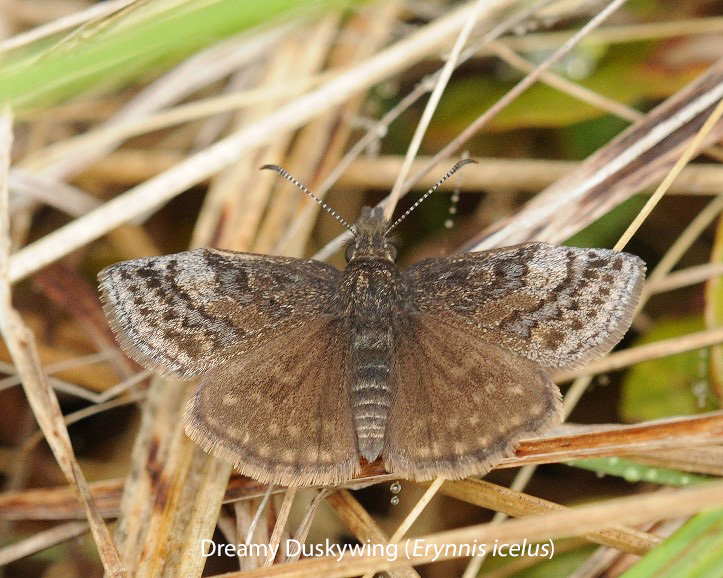
Beetles versus True Bugs
Another similar insect pair are beetles (order Coleoptera) and true bugs (suborder Heteroptera). One distinctive difference between them is their life cycle. Immature beetles look like slugs and form a pupa to metamorphose into a completely different looking adult (complete metamorphosis). Immature true bugs look roughly similar to adults, although they may have different coloration, and they have short wing pads rather than mature wings. They gradually transition to adults through a series of instars (growth phases), a process called incomplete metamorphosis (no pupal stage). Immature insects that undergo incomplete metamorphosis are called nymphs, whereas those that form pupae are called larva.
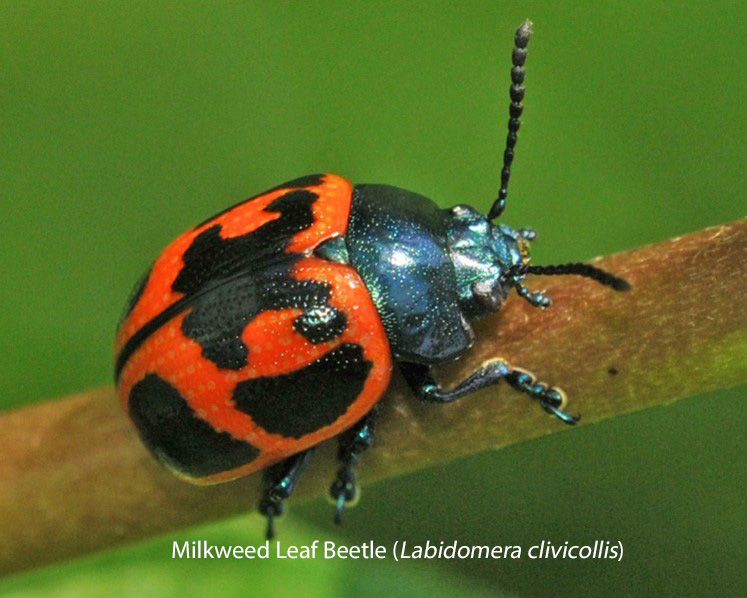
Beetles are incredibly diverse, ranging in length from 1-2 mm up to a couple of inches or more. Most adult beetles have thin, membranous wings hidden by wing covers (elytra). The wing covers meet in the middle, creating a line down the center of their back. If you see an insect with a line down the center of its back, it’s a beetle. When they take off to fly, beetles lift their wing covers and fly using their membranous wings. Beetles also have antennae with 10 or more divisions, as shown in this photo. Similar looking true bugs only have 4-5 segments to their antenna.
True bugs can look similar to beetles, but they have wings that cross in the middle of the back, often creating an X pattern, as in the photo on the right. Another distinguishing feature is the thin antennae with only a few segments. Immature true bugs (nymphs) may or may not look similar to adults, and they lack wings.
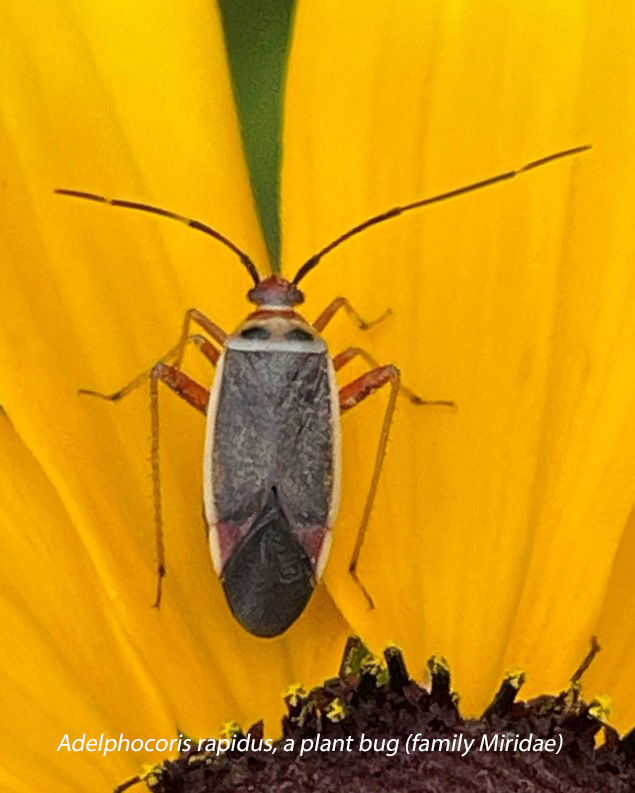
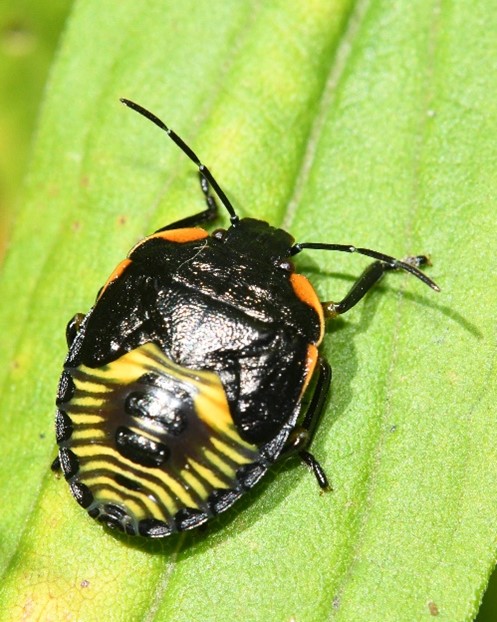
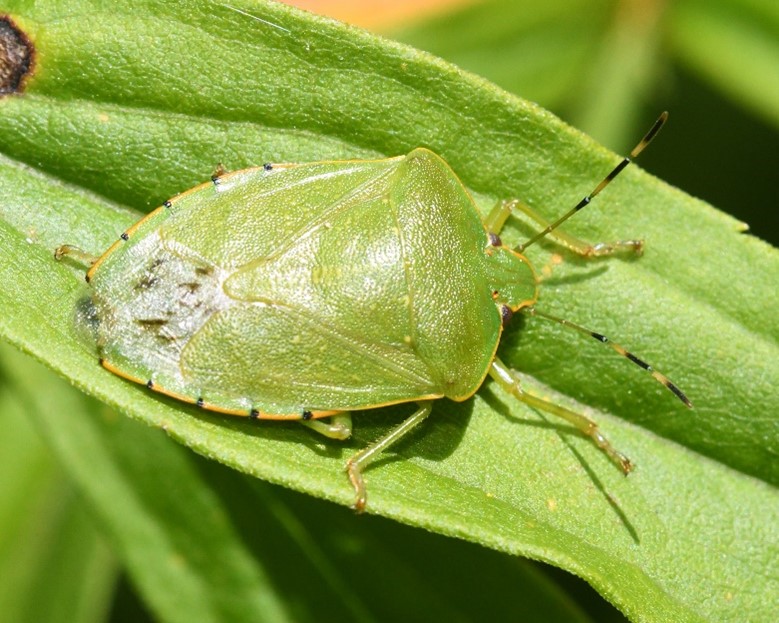
Nymph (left) and adult (right) Green Stink Bug (Chinavia hilaris)
The Green Stink Bug is another true bug. Note the wing pads in the larva and the wings that cross to form an X pattern in the adult. By the way, Stink Bugs, like many true bugs, can stink if threatened. They can secrete noxious compounds from glands in their thorax.
Bees versus Wasps
Bees, wasps, and ants all belong to the order Hymenoptera. Although it’s relatively easy to distinguish a typical bee from a typical wasp, each group represents a wide variety of species with sometimes similar appearances. Wasps, in particular, are incredibly diverse, some no bigger than 1-2 mm in length. The six images below show common bees (left column) and wasps (right column) that one can easily see in a field of wildflowers.
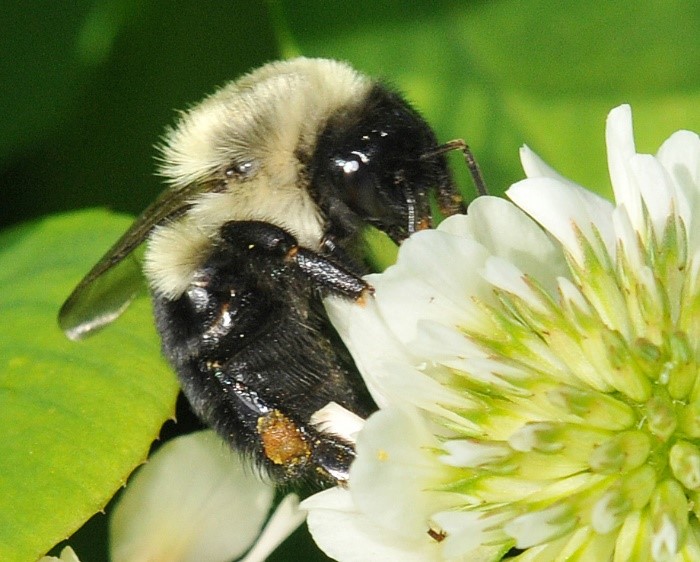
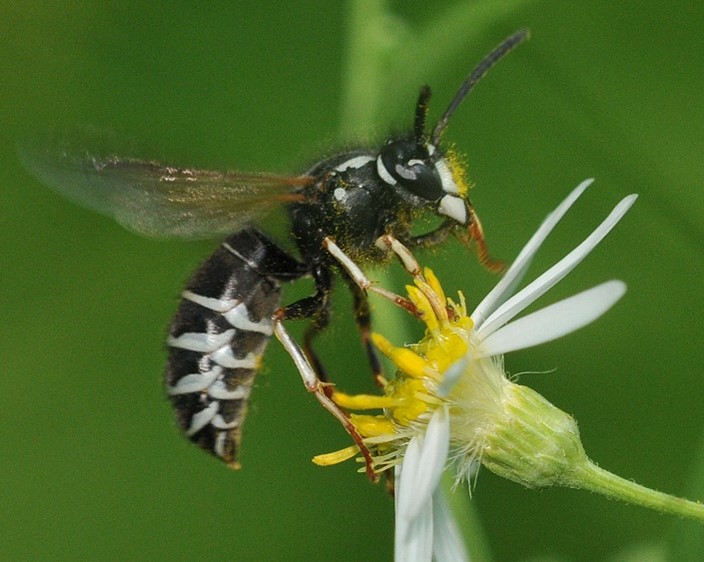
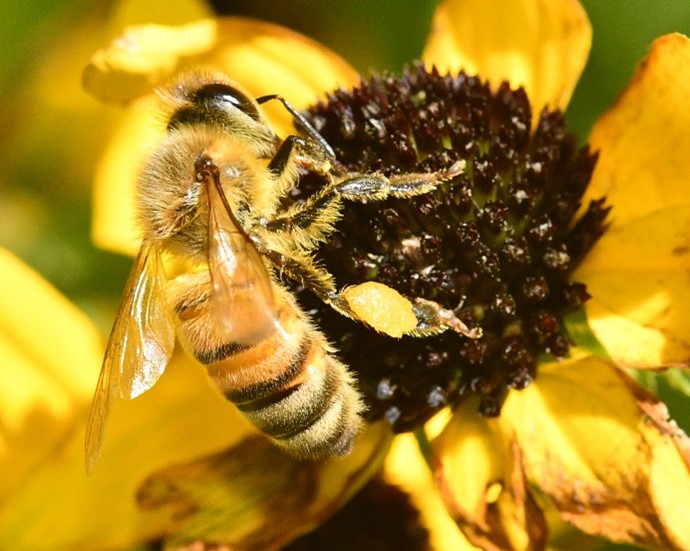
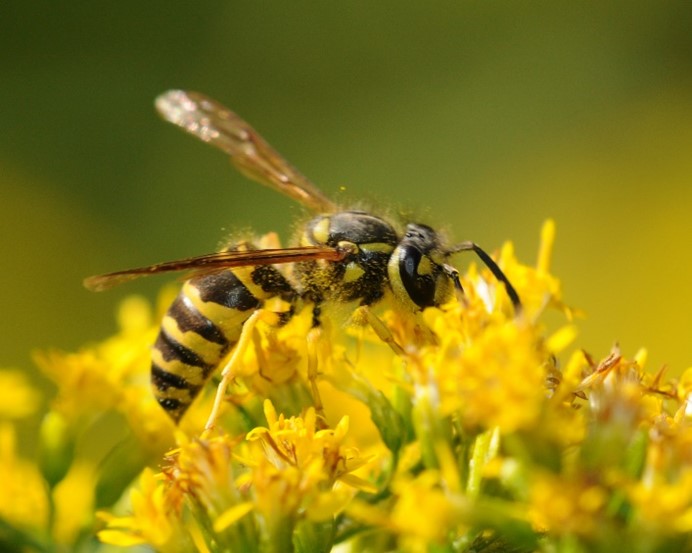
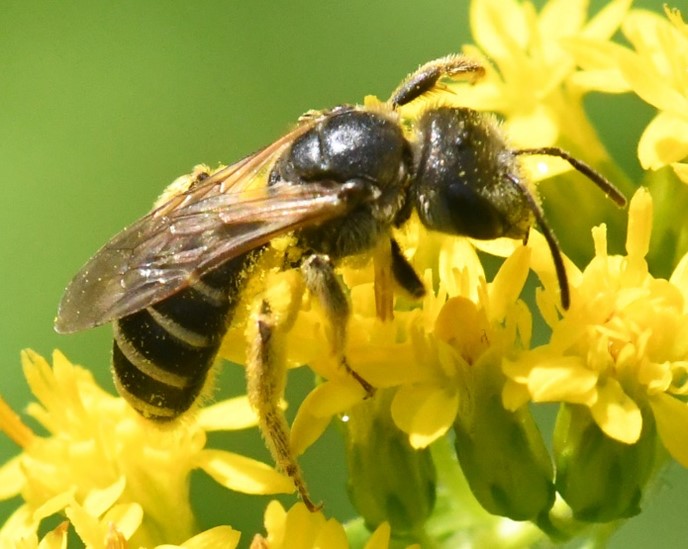
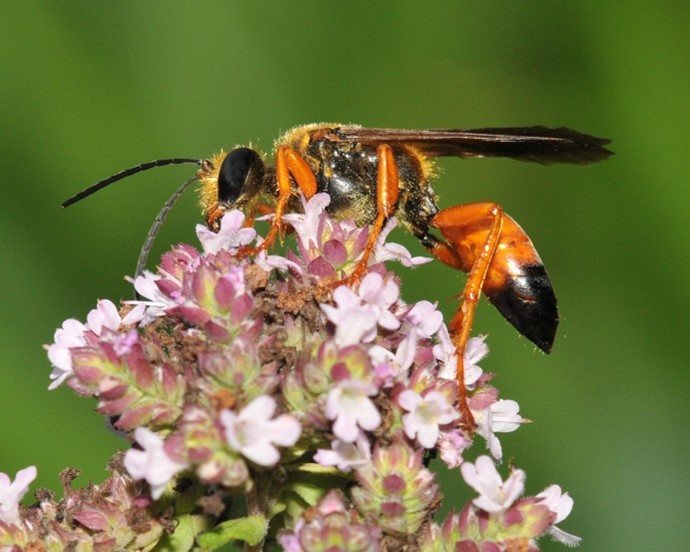
Most bees have hairs on their bodies and legs to collect pollen. Some bees, such as the Honey Bee shown above, also have pollen baskets on their hind legs. Wasps don’t collect pollen and therefore are less hairy (they do obtain nectar from flowers). Most wasps have a narrow “waist” (petiole) near the front of the abdomen, whereas most bees don’t. But there are many exceptions to these comparisons. Much of the difference is behavioral: bees feed pollen to their larvae; wasps are predatory and feed animal parts to their young.

